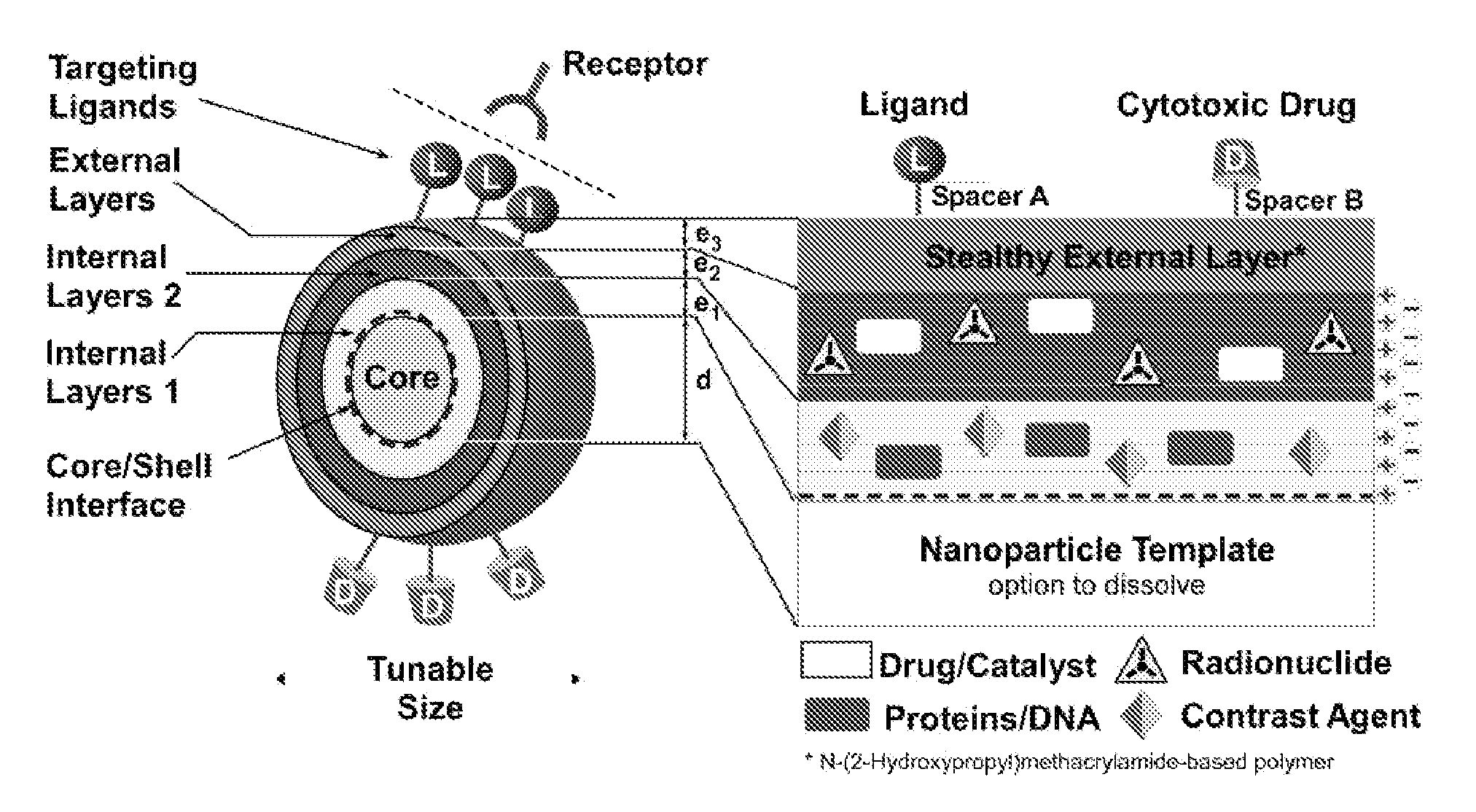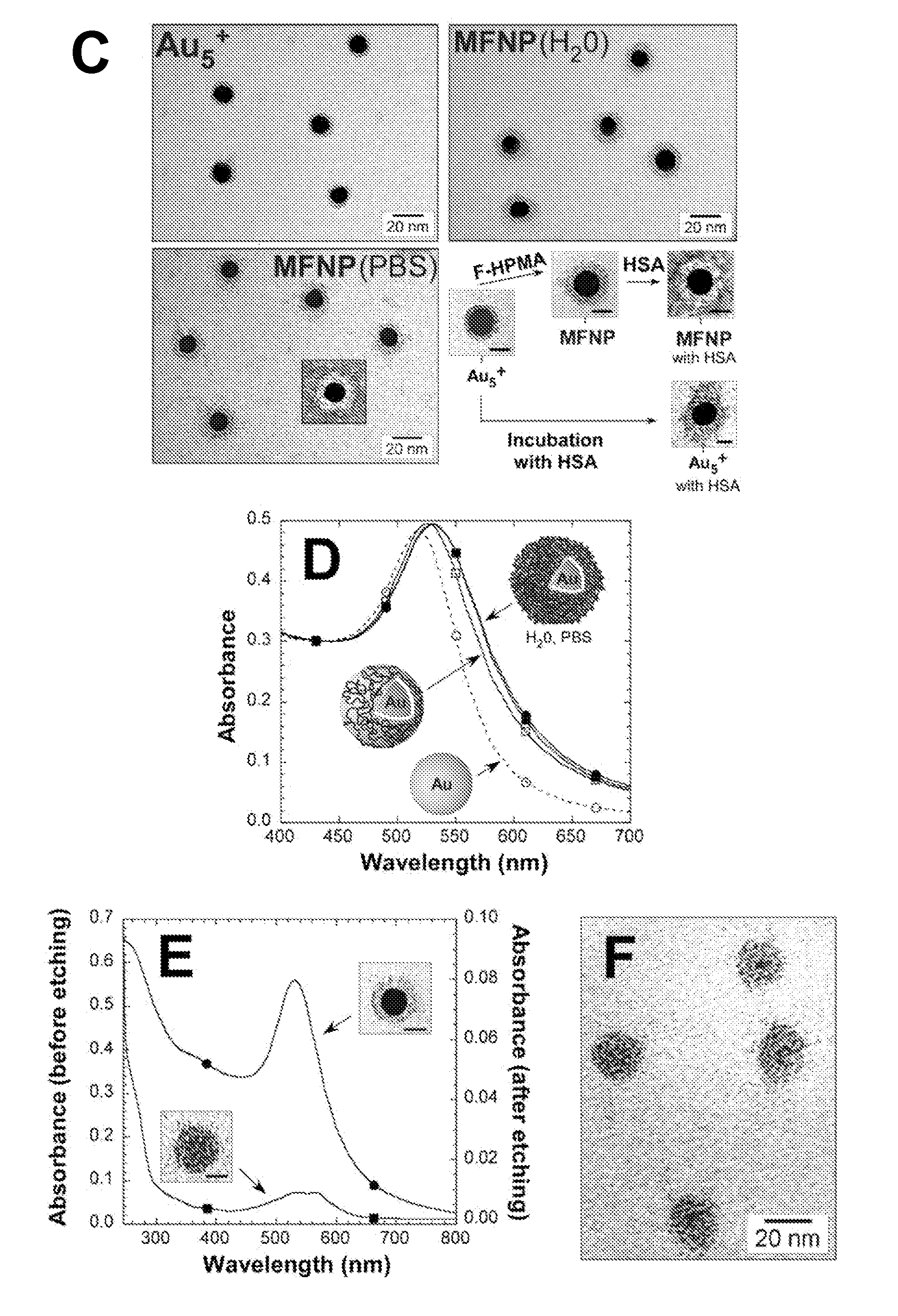Multifunctional stealth nanoparticules for biomedical use
- Summary
- Abstract
- Description
- Claims
- Application Information
AI Technical Summary
Benefits of technology
Problems solved by technology
Method used
Image
Examples
example 1
Multifunctional Cytotoxic Stealth Nanoparticles—A Model Approach for Cancer Therapy
[0315]1.1. Materials and Methods
[0316]Materials: 1-Aminopropan-2-ol, methacryloyl chloride, glycylglycine, glycyl-L-phenylalanine, L-leucylglycine, 4-nitrophenol, 4,5-dihydrothiazole-2-thiol, 4-(dimethylamino)pyridine (DMAP), triethylamine (TEA), N,N-dimethylformamide (DMF), N,N′-dicyclohexylcarbodiimide (DCCI), 2,2′-azobisisobutyronitrile (AIBN), doxorubicin hydrochloride (Dox.HCl), Cathepsin B, ethylenediaminetetraacetic acid (EDTA), H3BO3, Na2B4O7.10H2O, NaCl, KCl, KH2PO4, Na2HPO42H2O, KCN and dimethyl sulfoxide (DMSO) were from Fluka AG, Buchs (Switzerland). Poly(allyl amine hydrochloride) Mw=15 000 g / mol (PAH), tetrachloroauric acid (99.9%), trisodium citrate dihydrate, Nα-benzoyl-L-arginine 4-nitroanilide (Bz-Arg-Nap) and reduced glutathione were purchased by Sigma-Aldrich, hyperbranched poly(ethylene imine) (LUPASOL, Mw=25 000 g / mol, BASF), poly(styrene sulfonate) (PSS-pss-13k; Mw=13 500 g / mol)...
example 2
Aggregation-Resistant Multifunctional Core / Shell Nanoparticles Prepared by Electrostatic and Covalent Layer-by-Layer Assembly
[0344]2.1. Materials and Methods
[0345]Materials, synthesis of monomers, synthesis of the copolymers by radical copolymerisation, characterisation of monomers, and nanoparticles, synthesis of Au5+ and MFNPs, quantification of doxorubicin-loading per nanoparticle, and enzymatic doxorubicin-release profiles were as described in Example 1.
[0346]2.2. Results and Discussion.
[0347]State of the art: Nanoparticles stabilized with a sole electrostatic LBL process aggregate in isotonic buffers such as PBS. We already reported efficient functionalization protocols (e.g. no aggregation and high yields) for gold nanoparticles using the Layer-by-Layer technique in pure water (Schneider, G.; Decher, G. Nano Letters 2004, 4, 1833-1839; Schneider, G.; Decher, G.; Nerambourg, N.; Praho, R.; Werts, M. H. V.; Blanchard-Desce, M. Nano Letters 2006, 6, 530-536.; Schneider, G.; Deche...
PUM
| Property | Measurement | Unit |
|---|---|---|
| Fraction | aaaaa | aaaaa |
| Fraction | aaaaa | aaaaa |
| Fraction | aaaaa | aaaaa |
Abstract
Description
Claims
Application Information
 Login to View More
Login to View More - R&D
- Intellectual Property
- Life Sciences
- Materials
- Tech Scout
- Unparalleled Data Quality
- Higher Quality Content
- 60% Fewer Hallucinations
Browse by: Latest US Patents, China's latest patents, Technical Efficacy Thesaurus, Application Domain, Technology Topic, Popular Technical Reports.
© 2025 PatSnap. All rights reserved.Legal|Privacy policy|Modern Slavery Act Transparency Statement|Sitemap|About US| Contact US: help@patsnap.com



